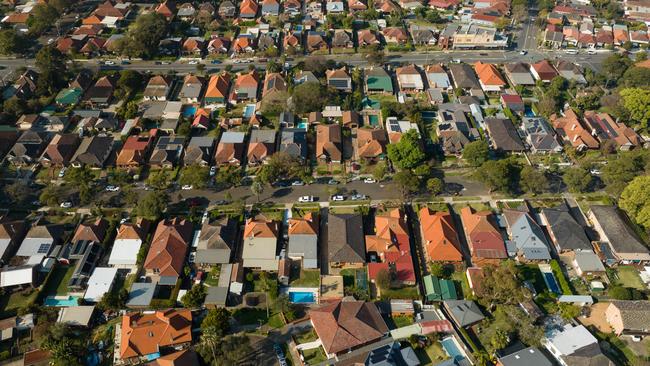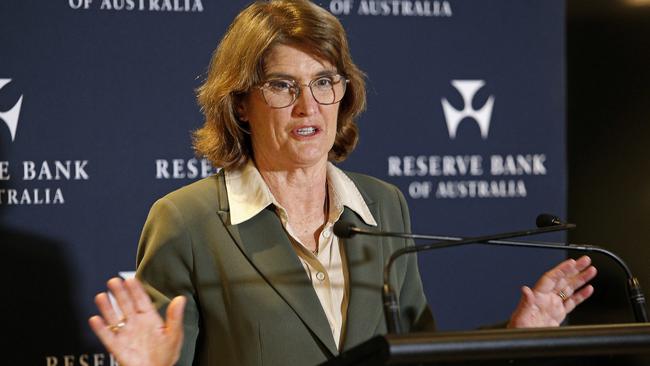Why rates won’t fall by much or help make housing prices more affordable
The good news is a recession appears to have been avoided. The bad news is that doesn’t mean rates fall back to ultra-low levels, nor will it help make house prices more affordable.

Who would have thought a pandemic, consequent economic shocks, central bank-inspired interest rate volatility, and a mortgage cliff would lead to higher property prices?
Take a journey with me for a moment back to mid 2020, right after the World Health Organisation finally conceded the world was in a crippling pandemic.
Now, imagine if at that time an exceptionally prescient forecaster said to you: “While everyone thinks the world and its economies are about to collapse into an unrecoverable depression, I believe inflation will surge to generational highs. Before that, however, interest rates will hit historic lows as central banks, including the Reserve Bank of Australia, seek to rescue their respective economies.
“When rates globally are near zero, emergency funding for the banks will allow them to offer generationally low fixed-rate mortgages, which, combined with work-from-home restrictions, will create unprecedented demand for houses and cause prices to surge. Then, inflation will force the RBA to raise rates faster than anyone can remember.
“But don’t fret because those shock rate increases won’t cause a recession, and as rates revert from ultra-low fixed rates to much higher variable rates, there won’t be any mortgage cliff either, nor will those higher rates cause house prices or equities to crash. In fact, before 2024, house prices and global equity markets will record new record highs.”
As ridiculous as that forecaster might have sounded back in 2020 … that’s exactly what has happened.
Today, people believe sustained higher rates will adversely affect property market activity, even amid higher migration rates creating demand for specific residential properties. Others hope that when our central bank inevitably cuts rates, property will become more affordable. But rate cuts will have a positive impact on activity.

We are rapidly realising hitherto predictions of a hard landing (recession), which have since given way to predictions of a soft landing, are now giving way to a ‘no landing’ scenario. Subtle and slower rate cuts will help bolster employment conditions, and the economy, as I have suggested continually, sidesteps a recession.
That, in turn, means rates don’t fall back to ultra-low levels. Eventually, as migration boosts the population (and Victorian property investors sell all the Victorian properties nobody else wants), everyone adjusts to the new regime, any excess properties for sale are soaked up, and property prices resume their rise.
House prices have not become much more affordable, and certainly not the properties anyone really demands – that is, those that are convenient to their place of work. In markets where unit prices have slumped the most, prices are dragged down by properties that don’t suit the needs of today’s buyers. The other big slumps have occurred in distant holiday destinations. And what suits Chinese off-the-plan investors, who don’t mind high density and might not have known about poor build quality, does not suit many other young Australian families.
Meanwhile, soaring building, consulting, regulatory, and compliance costs have rendered many new projects economically unviable. They don’t get off the ground, and so supply remains constrained.
So, if interest rates stay around here, or maybe a bit lower, and that does not help make house prices more affordable, what will?

It won’t be the Greens’ proposed axing of negative gearing and the capital gains tax discount. According to the Grattan Institute, these add just a couple of per cent to investment property prices, and given it takes more than a decade to save for a 20 per cent deposit right now, much bigger changes are needed.
Negative gearing is attractive to many because it means an individual can invest in a property, make it available for rent, and claim the losses against their income. It is one of the more significant ways for PAYG wage earners to reduce their tax bill (of course, they still need to afford to fund the losses during the year).
Removing the incentives for those who can afford investment properties won’t make them more affordable. What it will do is reduce demand for investment properties, rendering those properties sub-economic for developers to build and ultimately reducing their supply. Fewer rental properties being built is exactly the opposite of what the Greens and others want to see.
Meanwhile, negative gearing occurs because there is both the expectation of a capital gain and because the tax rates of those most incentivised to negatively gear are high.
If the belief that less competition for an investment property would make those properties more affordable, for example for first-home buyers, is supported by evidence, then presumably, lowering individual tax rates, including by changing their progressiveness and the tax mix, could simultaneously put more money in the pockets of those saving for a deposit while also reducing competition for investment properties.
I am not convinced the solution is simple to effect. The right types of properties need to be built in the first instance. That means local councils and state governments must step in rather than let market forces dictate what is built. Alternatively, the right incentives need to help direct those market forces.
Meanwhile, the approval process needs to be streamlined and the costs of residential construction reduced by changing the nature of competition for trades that exists between large state infrastructure projects and smaller suburban residential projects.
But even after all of that, the best that can be hoped for is that a combination of policies slows price growth for long enough for wages to catch up. The best the above guidelines can do is help that along. In 50 years, property prices will be higher anyway, and likely much higher than they are today, regardless of the bumps caused by policy mistakes made along the way.
Roger Montgomery is founder and chief investment officer at Montgomery Investment Management







To join the conversation, please log in. Don't have an account? Register
Join the conversation, you are commenting as Logout